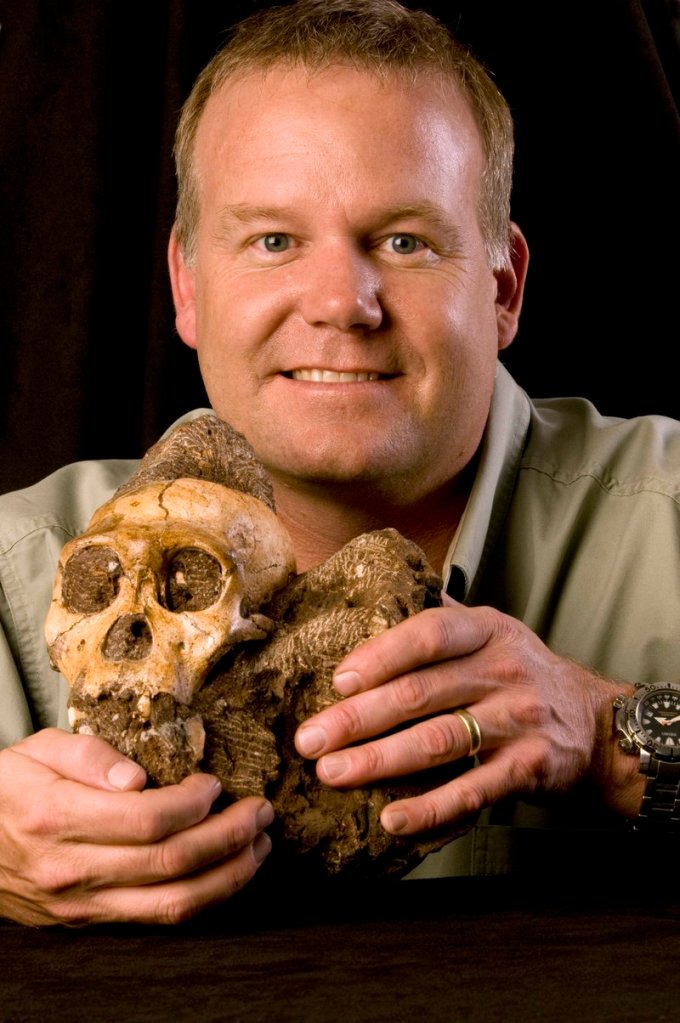After examining the fossils of two hominids that lived nearly 2 million years ago, anthropologists say the anatomical features of the adult female and young male strongly suggest they could be members of a species that was a direct ancestor of modern humans.
In a series of reports in today’s edition of the journal Science, researchers describe the Australopithecus sediba specimens as having a curious mix of primitive and modern features that could prompt experts to redraw the human family tree.
For instance, they had hands capable of using tools but still strong enough to grasp tree branches. They had a more curved pelvis that would have theoretically accommodated a bigger brain on its way through the birth canal, even though they still had small heads.
Perhaps the mosaic of features indicates that A. sediba was at an evolutionary transition point between the tree-climbing australopithecines and upright-walking, often tool-using members of the genus Homo, which includes Homo sapiens, the single surviving member species.
“It doesn’t change the way we look at Australopithecus overall, but it does suggest sediba might be a good ancestor for the genus Homo,” said Steven Churchill, a paleoanthropologist at Duke University who co-wrote several of the studies.
The fossil remains were discovered in 2008 by Lee Berger, whose then-9-year-old son had accompanied him to a dig site in South Africa. Berger’s son had been chasing their dog, Tau, when he stumbled across a rock and immediately saw that it was a fossil. He took it back to his father, who recognized a collarbone in the block of stone.
Paleoanthropologists soon found the rest of the remains, and surmised that the two must have fallen down a hole into a cave and died there. Their bodies were surrounded in cave sediment, preserving them.
A. sediba was soon recognized as a new species and classified with the australopithecines. (The most famous member of this group is Australopithecus afarensis, better known as Lucy, who lived 3 million years ago.) But the new studies indicate that A. sediba had begun to develop more human-like qualities.
Researchers mapped the surface inside a skull to get a picture of what the brain looked like. Though relatively small and still sharing bumps and furrows characteristic of other Australopithecus species, the brain showed changes in the frontal lobe reminiscent of modern humans’ front-loaded craniums.
The examination of the pelvises revealed more surprises. The A. sediba pelvis was round and bowl-shaped, rather like those of people. Scientists had thought that modern humans developed such a pelvis in part to allow large-brained babies to fit through the birth canal.
But, Churchill said, “a lot of the things which were thought to change because of bigger-brained babies are happening before bigger-brained babies came along.” This probably meant that two-footed travel was the stronger driving factor in pelvic evolution, he said.
Send questions/comments to the editors.



Success. Please wait for the page to reload. If the page does not reload within 5 seconds, please refresh the page.
Enter your email and password to access comments.
Hi, to comment on stories you must . This profile is in addition to your subscription and website login.
Already have a commenting profile? .
Invalid username/password.
Please check your email to confirm and complete your registration.
Only subscribers are eligible to post comments. Please subscribe or login first for digital access. Here’s why.
Use the form below to reset your password. When you've submitted your account email, we will send an email with a reset code.